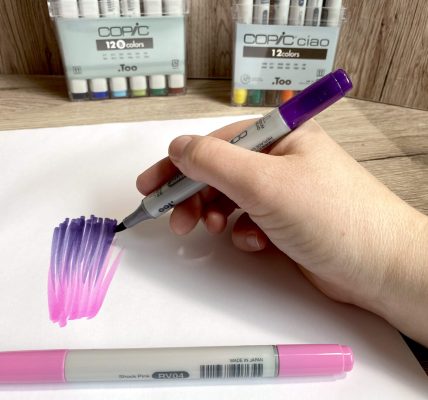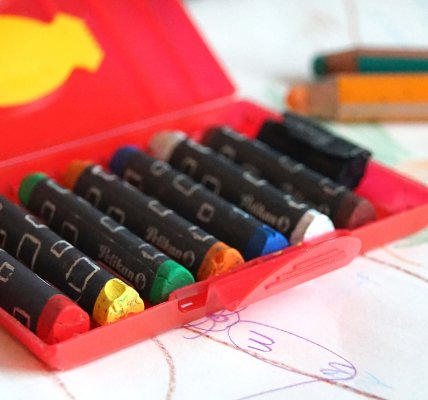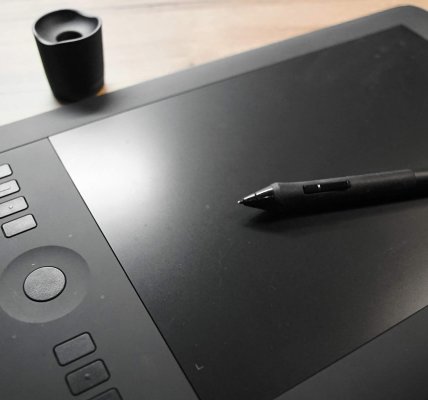Coloring with felt-tip pens
On this page you will find information about coloring with felt-tip pens, as well as some tips and tricks.

Coloring with felt-tip pens
The peculiarity of felt-tip pens is that they cover very well but are also “blotchy”; you can therefore always see the lines that you have already drawn. This is why alcohol-based markers are used for professional coloring (e.g. by comic or manga artists, graphic designers, interior designers, etc.). However, as not everyone can afford a whole set of markers, felt-tip pens are the cheaper alternative. However, areas that have already been colored in cannot be painted white again (at best with Tipp-ex). Therefore, white areas must be left out, as you cannot paint white.

Learning to draw with felt-tip pens
I associate felt-tip pens with the most and best painting experiences of my childhood. If something needed to be colorful, then a felt-tip pen came to hand. After all, their colors are much stronger, brighter and more opaque than those of colored pencils (which of course also have their own charm).
Of course, as a primary school child, I didn’t get the most expensive and best felt-tip pens. The cheap ones always ran out very quickly and broke. Later, I was given brush markers from Lyra, which I really enjoyed. You could color in the smallest corners and the durability and luminosity of the colors was phenomenal. Unfortunately, the pens were destroyed in a fire, so I had to look for alternatives.

As a teenager, I finally switched to Stabilos. They were and still are available as fineliners for outlines and as thicker, proper felt-tip pens. I can’t count how many of them I bought and used. They eventually became a collector’s item. After all, Stabilos lasted much longer than cheap felt-tip pens and their colors were also much more reliable if you wanted to buy more.
I no longer use felt-tip pens myself as I have switched to markers. But when I was at school, they always gave me a lot of pleasure and inspired me to create one or two comics.
Example image – Coloring with felt-tip pens for beginners
A little guide to coloring with felt-tip pens. Here I show you a few examples of pictures that have been colored with felt-tip pens. To be able to color the same picture several times, I scanned it, edited it a little on the PC and printed it out again. This allowed me to color the same motif on the same paper each time. You can of course try it out for yourself – just print out the template and off you go!

The template to be colored should have clear contours that cannot be blurred again if possible. For my example, I first drew a picture in pencil and then traced the contours with an ink pen with a fine tip. As soon as the lines were dry, I carefully erased the pencil lines.

As dark colors also cover more with felt-tip pens, I started with the light colors first. I immediately outlined the areas that should remain white and only colored in the area around them. I gradually colored in the light areas. Then I continued with the dark colors. Finally, I painted shading with even darker colors.
Coloring with felt-tip pens Tips
As you are limited in your choice of colors by the number of pens you have at hand, you can “mix” the colors by painting over an area with several different colors. This works best if the color you want to paint over is lighter than the one you are painting over.
If you paint on very smooth drawing paper or directly on marker paper (German blog), you can reduce the strokes even more, as the paint will not dry as quickly. Painting on smooth paper is different to painting on drawing paper or printer paper, for example, which absorbs the paint quickly and may cause it to run.

Alternatively, you can immediately use short, sweeping strokes for coloring with felt-tip pens. This creates a lovely effect and allows you to blend colors by combining several tones. The streaky quality of the felt-tip pen is deliberately integrated into the image as a visual effect.
Similar to coloring with colored pencils (German blog), combining multiple color tones can enhance your felt-tip pen coloring. And just like coloring with markers, felt-tip pens allow you to work in layers, creating multiple gradations with the same pen.
More Pages



























![Lyrics: Bling Bling Sternentanz
(Nightmage / Song enabled by Udio)
[Hook]
uuuuh uh uh uh Bling Bling
Bling Bling,
Licht, Glanz, Schimmer,
Jeder Moment wird zum Lieblingsding.
uuuuh uh uh uh Bling Bling
(Verse 1)
In der Dunkelheit, da funkelt's auf,
Lichter tanzen, ein endloser Lauf.
Überall ein Glanz, so klar und rein,
Wie Sterne, die uns heimlich scheinen.
[Hook]
uuuuh uh uh uh Bling Bling,
Bling Bling,
Licht, Glanz, Schimmer,
Jeder Moment wird zum Lieblingsding.
uuuuh uh uh uh Bling Bling,
Bling Bling,
Licht, Glanz, Schimmer,
Jeder Moment wird zum Lieblingsding.
(Verse 2)
Schritte durch die Stadt, im Neonlicht,
Jeder Schein ein kleines Gedicht.
Reflexionen spielen auf dem Weg,
Jeder Bling ein stiller Fleck.
[Hook]
uuuuh uh uh uh Bling Bling,
Bling Bling,
Licht, Glanz, Schimmer,
Jeder Moment wird zum Lieblingsding.
uuuuh uh uh uh Bling Bling,
Bling Bling...
(Bridge)
Sonne, Mond und Sternenlicht,
Sie weben Träume, eine Goldschicht.
Ein Funkeln hier, ein Schimmer dort,
Licht trägt uns an einen anderen Ort.
[Hook]
uuuuh uh uh uh Bling Bling
Bling Bling,
Licht, Glanz, Schimmer,
Jeder Moment wird zum Lieblingsding.
uuuuh uh uh uh Bling Bling
Bling Bling,
Licht, Glanz, Schimmer,
Jeder Moment wird zum Lieblingsding.
uuuuh uh uh uh Bling Bling](https://zeichnen-lernen.net/wp-content/plugins/feeds-for-youtube/img/placeholder.png)